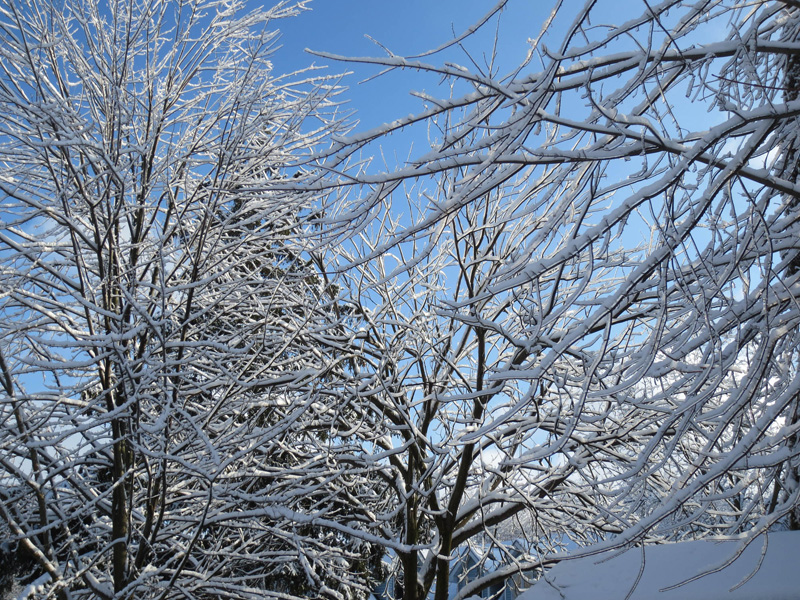Your Trees in Winter
Have you ever sat in your chair gazing onto the winter wonderland that is your backyard and wondered, “What are those trees up to these days?” No? It’s just me then…
I’m going to tell you anyway. It’s fascinating stuff, I promise.
The Deciduous
These are the leaf-dropping trees, loved from spring to summer and cursed throughout fall when the blisters start forming on your palms from all the raking (try some gloves next year).
Falling leaves are one of the ways deciduous trees stay alive. Leaves pull moisture from the tree so by simply removing the source of the loss, the tree can hold onto the water, saving it for better uses.
By now your deciduous trees have lost their leaves. Your tree is bare and looks like it isn’t doing much besides waiting out the short, cold days. Not so fast!
To avoid damage in winter, trees have to stay on top of their game and they do this in a few different ways:
- The tree may push water out of cells
- The tree may produce extra sugars
- The tree may “supercool” its water
All of these options are aiming to avoid one thing: xylem / phloem burst. Think about the last time you put a bottle of water into the freezer to cool. Remember when you forgot about it and you came back to a bloated bottle, or worse? The same concept applies to the water in trees: they can’t escape the laws of physics. Back to our survival methods:
- By pushing water out of the cells, the tree goes into a dehydrated state. No water in the pipes means no water to expand and burst them.
- Extra sugar in the water lowers the freezing temperature, sort of like an anti-freeze. It’s the same reason why it takes juice longer to freeze than water in your freezer.
- Supercooling is, well, cool. By increasing the pressure, you can decrease the freezing point. This means you can have unfrozen water at temperatures well below 0°C.
Below the surface, the roots are raring to go! They may go dormant when temperatures drop but they are ready to seize every warm soil opportunity. So while the tree aboveground looks about ready to sleep forever, the roots are holding that specimen in place and waiting for the day here and there in the winter when temperatures are favourable.
The snow that has fallen on most of Canada in the last month or two has created an insulating barrier between the cold air temperatures and the ground. Your tree may seem in a state of tranquility from your armchair, but, I can assure you, those roots are up to something!
Nest week: Conifers!




